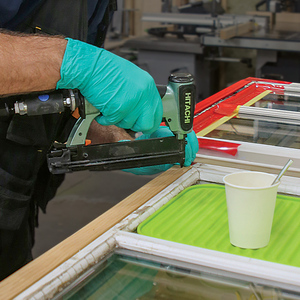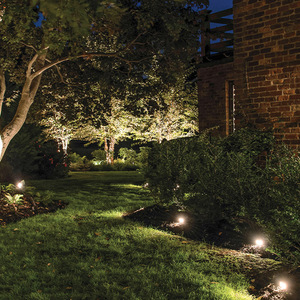I’ve got a 100 year old barn in Connecticut, which I’ve completely stripped of all the paint it once had using a Paint Shaver (so the exposed wood is relatively fresh).
I really don’t want to have to scrape loose paint in the future, so I was leaning toward staining instead. It had been my impression that the only reason people don’t stick exclusively with solid stains (and instead put up with scraping) is that stain requires a complete strip and that’s a lot of work. But since that part’s already done….. I’ve also heard recently that the solid stain has the same penchant to peel that paint does. Is this true?
So then the question is should I go with the oil primer and two coats of latex PAINT? Oil primer and two coats of solid latex STAIN? Or simply two coats of a solid oil STAIN?
The paint store was recommending the straight solid oil stain (BM or Cabots) — they suggested that this would allow for the best penetration/longevity balance possible for an old barn whose wood has done whatever bleeding it will be doing.
Do you agree? Any ideas on these numerous issues would be much appreciated!
Jed.



















Replies
Jed, I have no answers for you (I think they're generally painted though) but I do have a question about the PaintShaver. I'm considering stripping my 1866 colonial using a PaintShaver and would lover to hear what you think of it.
Did it mar the wood much?
Did you use the vacuum attachment to contain the lead?
Does it require much getting used to?
Thanks,
Here are a few links to snoop around at...
http://www.uvm.edu/~vhnet/hpres/publ/barnb/bbtoc.html
http://www.thebarnpages.com/html/preservation.asp
I bought that Paint Shaver on eBay for $400 used once. Figured I'd drop it back on eBay when I was done, but I liked it so much I'm thinking I'll keep it. The person I bought it from had used one of the six cutting edges, I used two more to strip the whole barn. Mine came with two sets of blades, so I've got many more to go before I need to sharpen or buy another set (at only $50 a set).
Most of our barn is vertically sided rather than clapboard but we had a little of both for good measure. Works best where the siding isn't cupped or warped, etc. Yes, I used the vaccuum attachment with a dropcloth to get the errant flakes that didn't make it into the vaccuum (less than 5% of the total, I'd say). Wore a respirator, eye protection, hat, long sleeves, etc taking care not to wear those clothes into the house after each day and piled them up until the job was done to wash them all together with a couple cycles on the washer afterward to be sure everything was clean before moving to the regular washing. In all the barn took me less than 4 days to strip clean (weekends and bits and pieces during the week after work).
The Paint Shaver has a very sensitive thumbscrew that allows you to set the depth of the blades (I did mine on the fly, without shutting down etc, a quarter-turn at a time). Start with the blades set too high and take a pass at the wood, turn the thumbscrew, take another pass at the wood, etc until you get to the desired depth. I decided to take off a touch more of the wood to have a fresh surface. Did it mar the wood? Occassionally, but you can always take another pass over that area with the Shaver to smooth it out again, so I NEVER found it to be a problem. I did it with a power palm sander close behind to smooth out the wood surface which is alittle rough, but only takes 30 seconds to fix with the sander afterward. For a barn, I probably could have just left it alone, but....
The Paint Shaver can't get right up to places like mouldings around windows so you end up having to take care of those areas by hand (if you're as picky as I am).
Finally, while I wasn't completely diligent about it, you do need to set most of the nails (at least the ones you can find readily) to avoid hitting them with the Scraper. When you do hit nails it can split the wood, tear out the nail, certainly helps to dull the carbide blades faster, and theoretically can fracture the carbide.
FHB did an article on exterior paint removal about a year ago, in which the Paint Shaver figured prominently, which was why I decided to give it a try. They've got pictures in there etc. and talk through the whole process. My surface turned out cleaner than those pictures suggest (but I was probably taking off an extra mm of wood...). They also used the Metabo Paint Remover to get into those tight spots. While I decided to save the $$ this time around, when I do my house next summer, I'll likely spring for it because that hand scraping is a real pain in the neck.
Definitely worth the investment in my mind, but do try to pick one up on the cheap if possible. Buying used ones through AIT Tool is a possibility but I found that it didn't save you much. Hope this helps.
By the way, thanks for the links! That fixer-upper you posted about with the pictures is unreal! Good luck with it!
Jed.
Edited 8/28/2003 1:39:33 PM ET by JKalk
Jed: See Oct 2002 Consumer Reports Magazine: Semitransparent stains tested so poorrly after only 2 years that they stopped testing them altogether. CR recommends solid stains, esp Olympic premium and Behr Plus 10 (Home Depot) , which last 9 years estimated years of use.
Thanks very much everyone. That's helpful.
One other question. Anyone have experience with Sherwin Williams' WoodScapes stain? Is this Acrylic Solid stain any good? Or should I just stick with the oil?
Jed.
Yes sir, I do. I sprayed one coat on about 200" of wood fence with it 6 years ago and it still looks very good. This fence sits right out in the blazing sun and takes on the extremes of weather in northern Illinois. Guesstimate is that I'll probably want to redo it in another 2 years, but then I'm fussy about how it looks.
Knowledge is power, but only if applied in a timely fashion.
Thanks very much for the input!
I'd use the solid stain because it doesn't generally peel but just wears away.
If all goes well, you should ony have to do a bit of wire brushing and/or give the building a power wash when renewal becomes necessary.
...... Cabot's OVT in oil formulation